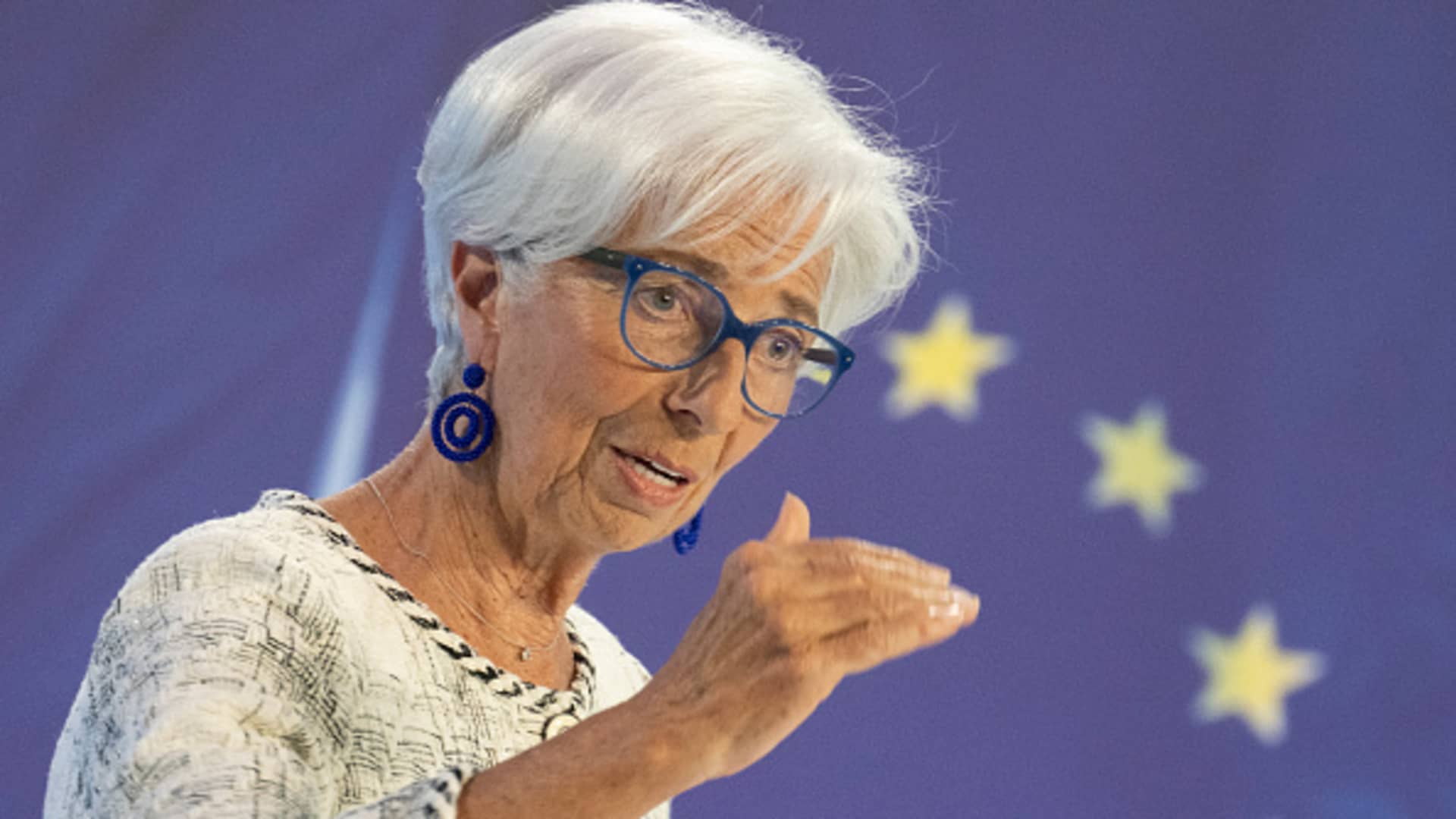Boeing Machinists union members picket outside a Boeing factory on September 13, 2024 in Renton, Washington.
Stephen Brashear | Getty Images
It’s been just over a month since more than 30,000 Boeing machinists walked off the job after overwhelmingly voting down a tentative contract. Costs and tensions have only risen since then.
The strike is adding to pressure on Boeing’s new CEO, Kelly Ortberg, who was brought in over the summer to solve the plane maker’s various troubles. The strike, which S&P Global Ratings estimates costs Boeing more than $1 billion a month, bookends an already difficult year that started with a near-catastrophic blowout of a 737 Max door plug and comes six years after the first of two fatal Max crashes put the storied manufacturer in constant crisis mode.
The union and company remain at an impasse, and airplane production at factories in the Seattle area and other locations has been idled, depriving Boeing of cash. Boeing last week pulled a sweetened contract offer that the union had rejected, saying it wasn’t negotiated.
Boeing officials had been upbeat to airline customers about getting to a deal in the weeks before the original vote, according to people familiar with the matter who spoke on the condition of anonymity because the conversations were private.
But that optimism didn’t pan out, as workers on Sept. 13 voted 95% against an initial tentative labor deal.
“They’ll have to increase their offer. There’s no doubt about that,” said Harry Katz, a professor who studies collective bargaining at Cornell University’s School of Industrial and Labor Relations. He said one of the union’s demands, a return to a pension plan, is unlikely, however, and estimated the strike could last two to five more weeks.
The process of ending strike has turned more fraught, with federally mediated talks breaking down midweek.
Boeing on Thursday said it filed an unfair labor practice charge with the National Labor Relations Board that accused the International Association of Machinists and Aerospace Workers union of negotiating in bad faith and misrepresenting the plane makers’ proposals.
Late Friday, Jon Holden, president of the striking workers’ union, IAM District 751, pushed for a return to negotiations.
“CEO Ortberg has an opportunity to do things differently instead of the same old tired labor relations threats used to intimidate and crush anyone that stands up to them,” he said in a statement. “Ultimately, it will be our membership that determines whether any negotiated contract offer is accepted. They want a resolution that is negotiated and addresses their needs.”
Boeing’s unionized machinists are not receiving paychecks and lost their company-backed health insurance at the end of September. However, unlike during the last Boeing factory strike in 2008, there is more contract work in the Seattle area to help workers fill the gaps. A union message board posts job opportunities like driving for food delivery services and warehouse work.
Slashing workforce
A Boeing 737 MAX aircraft is assembled at the Boeing Renton Factory in Renton, Washington, on June 25, 2024.
Jennifer Buchanan | AFP | Getty Images
After the stock market closed Friday, Ortberg said the company plans to cut its global workforce by about 10% “over coming months,” including layoffs of executives, managers and employees.
He also told staff that Boeing will stop producing commercial 767 freighters when it fulfills its backlog in 2027 and that the delivery of its 777X will be delayed yet another year, to 2026.
The surprise cuts came alongside preliminary financial results that showed deepening losses: Boeing said it expects to lose nearly $10 a share for the third quarter and that it will incur charges of about $5 billion in its commercial and defense units. The manufacturer hasn’t had an annual profit since 2018. Ortberg faces investors in his first full earnings call as CEO on Oct. 23.
“The thing is once they get 737 production on track all their money problems are gone but they’re not willing to settle to make that happen,” said Richard Aboulafia, managing director at AeroDynamic Advisory. “They’re firing a lot of people who could make that [stable production] happen. It seems like they’re kind of burning down their own house.”
Aboulafia estimated labor in final assembly of an aircraft accounts for about 5% of the airplane’s cost.
Ortberg is now tasked with drumming up cash and stopping the bleeding as the company’s losses mount. Boeing’s shares are down 42% this year through Friday’s close, the steepest drop since 2008.

Boeing and S&P 500 performance
“We also need to focus our resources on performing and innovating in the areas that are core to who we are, rather than spreading ourselves across too many efforts that can often result in underperformance and underinvestment,” Ortberg said in a note to staff on Friday.
S&P Global Ratings last week warned the company that it was at risk of a downgrade to junk status, as halted production of Boeing’s bestselling 737 Max and its 767s and 777s costs the company more than $1 billion per month. The estimate includes previously announced cost cuts like temporary furloughs, a hiring freeze and a halt of most purchase orders for affected aircraft.
Boeing is “facing issues on quality, labor relations, program execution and cash burn, which seem to have created a continuous doom loop cycle,” said Bank of America aerospace analyst Ron Epstein in a note Friday. He said Boeing’s early financial release on Friday likely points to an equity raise in the works of as much as $15 billion.
Boeing 737 fuselages on railcars at Spirit AeroSystems’ factory in Wichita, Kansas, US, on Monday, July 1, 2024.
Nick Oxford | Bloomberg | Getty Images
The announced job cuts come after Boeing and the rest of the aerospace supply chain worked to hire and train new machinists and other specialists after pandemic-era buyouts and layoffs of thousands of employees.
Instability at Boeing could fan out to its suppliers. Boeing’s 737 fuselage maker, Spirit AeroSystems, is considering furloughing workers in its cost-cutting contingency plans, a spokesman said, adding it hasn’t made any decisions. Boeing is in the process of acquiring that company.
“They’re probably telling us a story about cost savings carrying them through,” Aboulafia said of Boeing’s latest cost cuts. “When has stuff not working stopped them from trying it again?”









